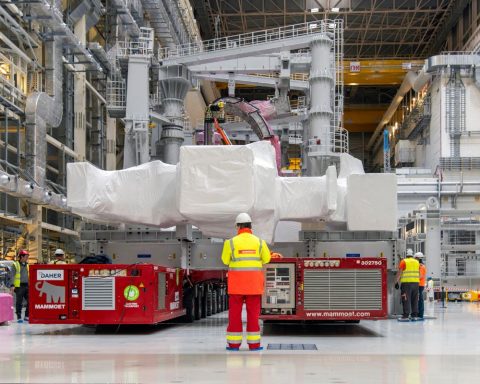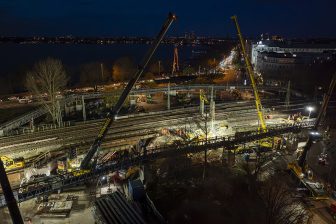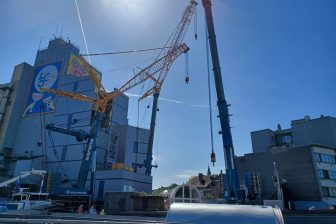
Mammoet’s electric-powered SPMTs spring into action at ITER
Heavy-lift and engineered transport specialist Mammoet has brought its electric battery-powered Self-Propelled Modular Transporters (SPMTs) into service at the ITER nuclear fusion research facility in southern France.
The primary function of these SPMTs is to transport large and heavy equipment required for the construction of the world’s largest tokamak. This device aims to prove the feasibility of fusion as a large-scale carbon-free energy source.
Mammoet is collaborating with its client DAHER to transport critical components, including 367-ton toroidal field coils and 440-ton vacuum vessel sectors. The process involves using two sets of twelve axle lines of SPMTs to transport the components from storage to the assembly area within the facility.
Speaking of the milestone, Pascal Taconne, Project Manager at Mammoet, said, “In July last year, ITER asked if we had an electric power pack available, and at that period it was a time when Mammoet had started to develop a new prototype internally. We explained that we could carry out the necessary steps to have it ready for the beginning of 2024.”
During the next six months, Mammoet conducted comprehensive testing with third-party organizations, including assessments for soundproofing and electrical interference. The company also carried out over 100 hours of testing using various types of cargo to demonstrate that the technology could successfully perform everyday tasks with a fully charged battery.
Previously, conventional diesel power pack units performed component transfers. These units are loud and generate carbon emissions and fine dust particles. Such particles need to be filtered and evacuated from indoor locations, which makes it difficult to maintain a clean environment for the tokamak.
As the tokamak needs to be built in a controlled environment where moisture, temperature, and particulates are all regulated, the new transport solution brings significant benefits. The ePPU is quieter and cleaner than the previous system, and it can power both lines of SPMTs simultaneously. This means that even heavier movements, which require them to work in tandem, can be performed fully electrically with the new system, according to Mammoet.
Michel Bos, Technical Specialist at Mammoet, said, “All the things that we have learned, building and testing the unit, and adjusting and making it better, have taught us so much about electrifying our equipment. The feeling that heavy movements cannot be done electrically has totally changed in the last year. We are now confident we can work day-to-day jobs easily, creating a more comfortable working environment for operators and supporting zero-emission construction areas. With jobs like ITER, we have proven it works.”
You just read one of our premium articles free of charge
Register now to keep reading premium articles.




